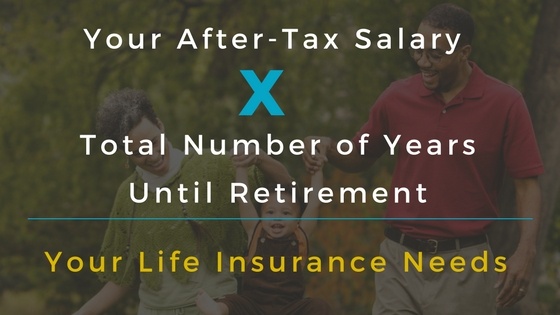Latest Posts
Your money should work for you.
Get the latest tips on how to plan for retirement and make better financial decisions.
Don't worry... we will NOT spam you!
In the purest forms, life insurance is protection. It provides flexibility to your loved ones if you’re no longer around. For most people, talking about their own demise can be difficult. But in reality, it’s only a small fraction of the puzzle that makes up your financial picture. When thinking about life insurance, three common questions usually pop up - Do I need it? How much should I get? What options do I have?
When Do I Need It?
No one wants to leave their family unprepared, and according to a recent Best Life Rates study, 84% of Americans would agree most people need it. However, only 59% hold a policy. If you have a family or others that depend on your income to survive, then life insurance is very necessary.
We believe it is important to consider an insurance policy as you reach three critical life stages: when you get married when you have a child, and/or when you buy a home. Once you have a policy in place, it is imperative that you review your plan on an ongoing basis, and adjust your coverage to meet the needs of you and your family.
What Options Do I Have?
If you’ve determined you need insurance to protect your family, then the next step is figuring out how much. While there are a lot of options, term or cash/permanent value are the most popular. Term insurance is just coverage. You pay a premium every month or year and in return have protection for a set amount of time. Whether it’s 10, 20, or 30 years, once your time is up the policy is over.
For example, if you buy a $400,000 twenty-year term and you pass away during that time period, your beneficiary will receive the $400,000 benefit. However, if you live through the 20 years, the policy ends without any benefits paid. You would then need to reevaluate whether you should reapply for a new policy.
.jpg?width=560&name=Life%20Insurance%20Graphics%20(1).jpg)
Another option is a cash/permanent value policy. Unlike term policies, this insurance is also a savings vehicle. Payments are split between your premiums and funding the death benefit and cash value. Cash/permanent value policies are generally more expensive than term life policies and come in many different formats (e.g. Whole Life, Variable Life, etc.). In general, most people stick with term policies because they’re more straightforward, but if you’re looking for an additional savings vehicle, cash/permanent value policy options could be a good fit.
A third option is employer-provided life insurance. Sometimes larger organizations will offer it as a company benefit. Generally speaking, the employer will cover two to three times your salary (which normally isn’t enough). If you unexpectedly pass away in your forties, that could be another twenty-plus year of income you would have contributed to your family which is now gone. Also, for insurance through your employer, if you lose your job or change companies, then you most often lose your life insurance too.
How Much Do I Need?
When planning how much you’d need, the two key questions to ask are how much money do you make a year and how much longer do you expect to work. Answering those can help you figure out what your family would need in order to replace your income.

You can adjust the formula as you see fit for your particular needs. For example, if you have a mortgage, you would want to add the total cost into your plan needs; if you have young kids, you could include the anticipated costs for college expenses. Fair warning – you might find your total benefit needs are a lot more than you originally expected. However, the most important thing is to make sure you have something saved. Don’t overcomplicate it. If the time comes when coverage is needed, having any insurance will be better than none.
On an annual basis, be sure you review and update your account and beneficiaries. It’s happened so many times that an ex-spouse or only one child is named on an account because the information wasn’t updated. There are hundreds of insurance companies, so if you buy direct or through a third party, you should pay around the same amount no matter where you buy the policy.
As always, be careful with insurance scams and if the situation feels strange we’d suggest you contact an insurance company directly or reach out to a trusted financial advisor for guidance.



